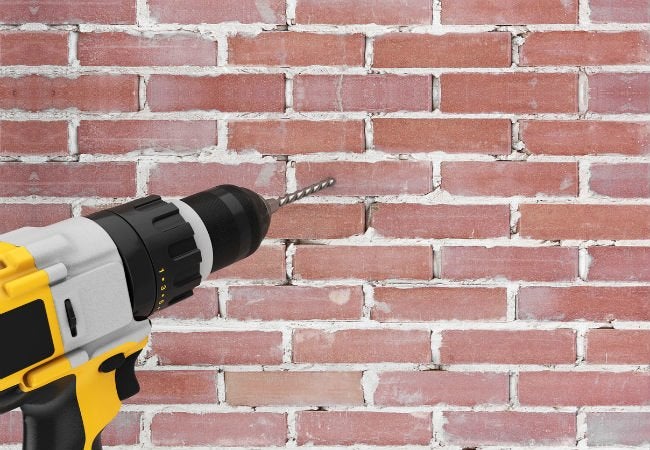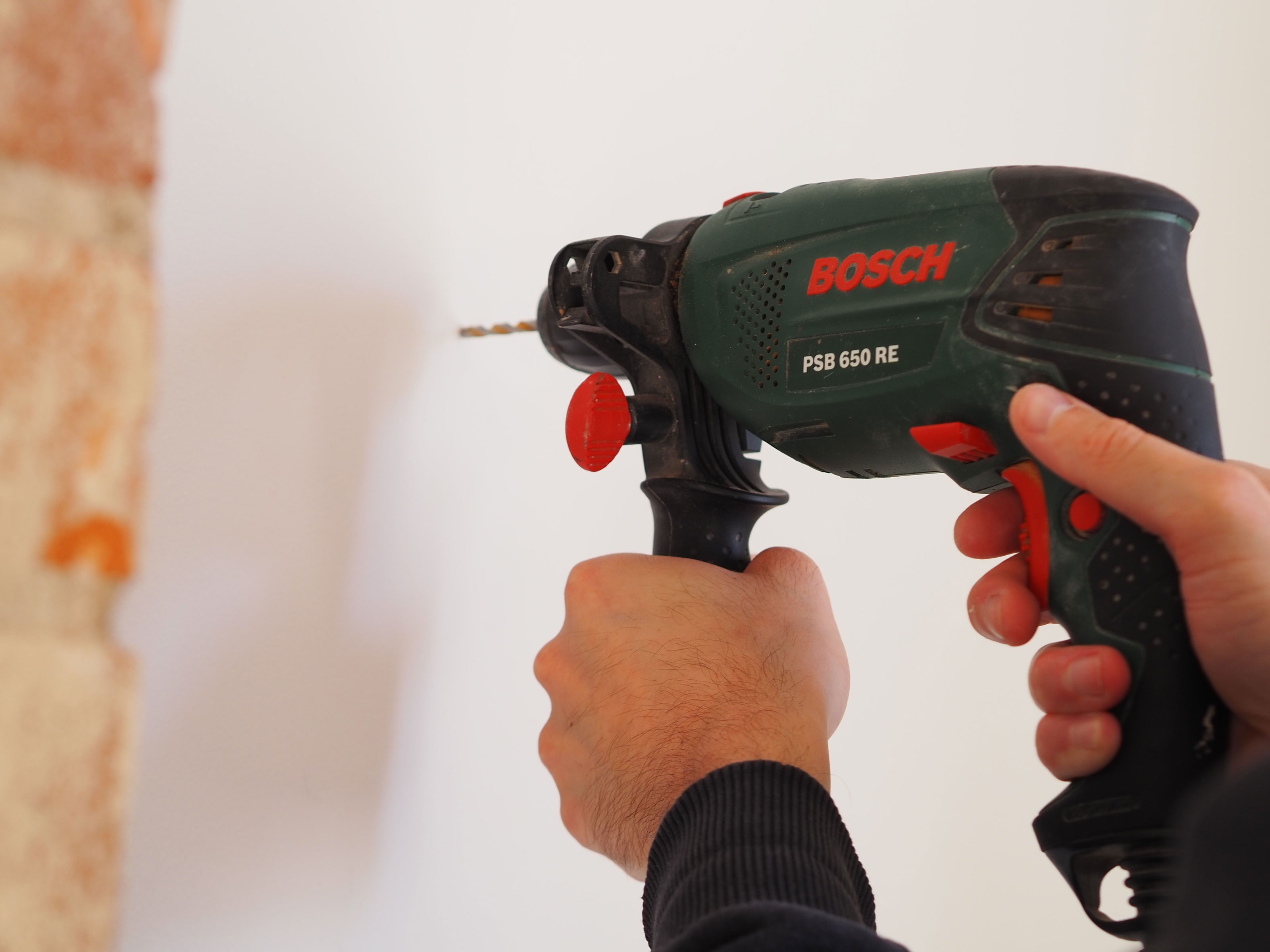So, you’ve decided to take on a brick project and you’re wondering, “What power drill do I need for brick?” Well, my young DIY enthusiast, you’ve come to the right place! Let’s dive into the world of power tools and explore the drill that will help you conquer those tough bricks.
When it comes to drilling into brick, you’ll need a tool that packs a punch. Brick is a sturdy material, and it requires a powerful drill that can handle the challenge. But don’t worry, we’ve got you covered! We’ll guide you through the features and considerations you need to keep in mind when choosing the perfect power drill for your brick project.
Ready to become the master of brick drilling? Let’s find out what power drill will be your trusty companion on this exciting DIY adventure! So, are you ready to unleash the power of a drill on those stubborn bricks? Let’s get started!
Finding the right power drill for brick is essential for a successful DIY project. Here is a step-by-step guide to help you select the perfect drill:
1. Consider the drill’s power and torque.
2. Look for a drill with a hammer function.
3. Check for variable speed settings.
4. Opt for a drill with a sturdy chuck.
5. Ensure the drill has a depth stop.
By following these steps, you’ll be equipped with the ideal power drill for your brick-related tasks.

Choosing the Right Power Drill for Brick: A Complete Guide
When it comes to drilling through brick, not all power drills are created equal. The type of drill you choose will greatly impact your ability to complete the task efficiently and effectively. In this guide, we’ll walk you through the factors to consider when selecting a power drill for brick, as well as the different types of drills available. Whether you’re a seasoned DIY enthusiast or a beginner tackling your first brick project, this article will provide you with the knowledge you need to make the right choice.
Factors to Consider When Choosing a Power Drill for Brick
Before diving into the different types of power drills, it’s important to understand the key factors that should influence your decision. These factors include:
1. Power and Torque
When drilling through brick, you need a drill with sufficient power and torque to penetrate the strong material. Look for drills with higher amps or voltage ratings, as they tend to have more power. Additionally, consider the torque ratings, as this will affect the drill’s ability to provide enough force to drill through the brick.
A drill with adjustable speed settings is also beneficial, as it allows you to control the drilling speed based on the density of the brick and the size of the hole you need to create.
PRO TIP: Opt for a corded drill when working with brick, as they tend to have more power than cordless options.
2. Size and Weight
The size and weight of the drill can greatly impact your comfort and maneuverability, especially when working on projects that require drilling multiple holes. Choose a drill that feels comfortable in your hand and consider the weight if you anticipate working for long periods.
PRO TIP: Look for drills with ergonomically designed handles and rubberized grips for added comfort and control.
3. Chuck Type
The chuck is the mechanism that holds the drill bit in place. When drilling into brick, it’s recommended to use a hammer drill or a rotary hammer drill, both of which have a chuck specifically designed for masonry bits. These drills deliver a hammering action in addition to the drilling motion, allowing for easier penetration into the brick.
PRO TIP: Look for drills with keyless chucks for quick and easy bit changes.
4. Accessories and Features
Consider the accessories and features that come with the drill. Some drills may come with a built-in level for accurate drilling, LED lights for increased visibility in dimly lit areas, or a built-in dust collection system to minimize the mess created during drilling. Evaluate these additional features to determine their usefulness for your specific project.
PRO TIP: Look for drills that come with a storage case or bag to keep all your accessories organized and easily accessible.
5. Budget
Lastly, consider your budget when choosing a power drill for brick. While it’s important to invest in a high-quality drill that meets your needs, you don’t have to break the bank. Compare prices, read reviews, and look for deals or discounts to find a drill that offers the best value for your money.
PRO TIP: Don’t compromise on quality just to save a few bucks. A reliable and durable drill will provide better performance and longevity.
Types of Power Drills for Brick
Now that you understand the key factors to consider, let’s explore the different types of power drills suitable for drilling through brick:
1. Hammer Drill
Hammer drills, also known as percussion drills, are specifically designed for masonry work and are highly effective at drilling through brick. These drills utilize a pulsating mechanism that applies both rotational and hammering action to the drill bit, making it easier to penetrate the brick.
PRO TIP: Look for a hammer drill with a high BPM (blows-per-minute) rating for better drilling performance.
2. Rotary Hammer Drill
If you’re tackling a larger brick project or regularly work with tough materials like concrete, a rotary hammer drill may be the best option. These drills deliver an even more powerful hammering action compared to hammer drills, making them ideal for drilling through hard bricks or aggregate-filled bricks.
PRO TIP: Consider a corded rotary hammer drill for maximum power and performance.
3. Cordless Drill with Hammer Function
If you prefer the convenience of a cordless drill, opt for a cordless drill that has a hammer function. These drills combine the versatility of a standard cordless drill with the added hammering action needed for masonry work. Keep in mind that cordless drills may have slightly less power than their corded counterparts.
PRO TIP: Look for a cordless drill with a high voltage rating and a battery that offers long runtime.
Conclusion
Choosing the right power drill for brick is crucial to ensure successful drilling projects. Consider factors such as power and torque, size and weight, chuck type, accessories and features, and your budget when making your decision. Additionally, select the appropriate drill type based on your specific needs, whether it’s a hammer drill, rotary hammer drill, or a cordless drill with a hammer function. By taking these factors into account, you’ll be well-equipped to tackle your brick projects with ease and precision.
Key Takeaways: What Power Drill Do I Need for Brick?
- A rotary hammer drill is the best choice for drilling into brick.
- Make sure the drill has a hammer function to provide impact force.
- Choose a drill with a high RPM (revolutions per minute) for efficient drilling.
- Consider the size and weight of the drill for ease of handling.
- Use masonry drill bits specifically designed for drilling into brick.
In summary, when it comes to drilling into brick, a rotary hammer drill with a hammer function, high RPM, and suitable masonry drill bits is the ideal choice for efficient and effective drilling. Remember to consider the size and weight of the drill for comfortable handling.
Frequently Asked Questions
When it comes to drilling into brick, choosing the right power drill can make all the difference. Here are some commonly asked questions to help you find the perfect drill for the job:
1. What type of drill bit should I use for drilling into brick?
When drilling into brick, it is best to use a masonry drill bit. These drill bits are specifically designed to handle the hardness of brick and concrete. They have a carbide or diamond tip that can withstand the tough material without dulling or breaking. Using a regular drill bit may not be effective and can potentially damage the bit or the brick.
Masonry drill bits come in various sizes, so make sure to choose a size that matches the diameter of the hole you need to drill. It’s also essential to use a slow speed and apply steady pressure while drilling to prevent overheating and ensure clean, precise holes.
2. Can I use a regular cordless drill for drilling into brick?
While regular cordless drills can handle most drilling tasks, drilling into brick requires more power than a standard drill can provide. Brick is a hard material that can strain the motor and potentially damage the drill. It’s best to use a hammer drill or a rotary hammer for drilling into brick.
Hammer drills have a hammering action that helps break through the tough surface of the brick while rotating. Rotary hammers, on the other hand, have a more powerful hammering mechanism and are better suited for heavier-duty drilling in masonry. These specialized drills will make the job much easier and ensure better results when drilling into brick.
3. Should I use a corded drill or a cordless drill for drilling into brick?
Both corded and cordless drills can be used for drilling into brick, but each has its advantages. Corded drills offer a consistent power supply, making them suitable for prolonged drilling sessions and heavy-duty jobs. They don’t require recharging or worry about battery life.
On the other hand, cordless drills provide the freedom of movement and are more convenient for jobs where an electrical outlet is not easily accessible. However, when using a cordless drill for drilling into brick, ensure it has enough power and torque to handle the task. Opt for a drill with a high voltage rating or consider using a higher Ah (amp-hour) battery for more power.
4. Do I need to use a specific drilling technique for brick?
When drilling into brick, it’s important to use the right technique to prevent damage and achieve clean results. Start by marking the spot where you want to drill with a pencil or marker. This will help guide your drill and ensure accurate placement.
Next, apply firm, steady pressure to the drill while maintaining a slow speed. Let the drill bit do the work and avoid applying excessive force as it can lead to overheating or broken drill bits. As you drill, periodically remove the dust and debris from the hole to prevent clogging and ensure efficient drilling.
5. How can I protect myself while drilling into brick?
When drilling into brick, it’s essential to take safety precautions to protect yourself from any potential hazards. Wear safety glasses or goggles to shield your eyes from flying debris and wear gloves to protect your hands from sharp edges.
If drilling indoors, make sure the area is well-ventilated to avoid inhaling dust particles. It’s also a good idea to use a dust extractor or attach a vacuum to your drill to minimize dust and keep the work area clean. Follow the manufacturer’s instructions and guidelines for the specific drill and accessories you are using to ensure safe and efficient drilling.

Summary:
Choosing the right power drill for brick is important to get the job done right. First, make sure to use a hammer drill for drilling into brick as it has the power to penetrate the tough material. Look for a drill with variable speed settings so you can adjust it for different types of bricks. Additionally, it’s essential to have masonry drill bits that are specifically designed for drilling into brick. Always wear safety gear like goggles and gloves when working with power tools.
When drilling into brick, start with a small pilot hole and slowly increase the size. Be patient and let the drill do the work without applying too much pressure. Finally, remember to use a strong and sturdy wall anchor if you’re planning to hang or mount anything on the brick surface. With the right power drill and technique, you’ll be able to tackle any brick project with ease and safety.
